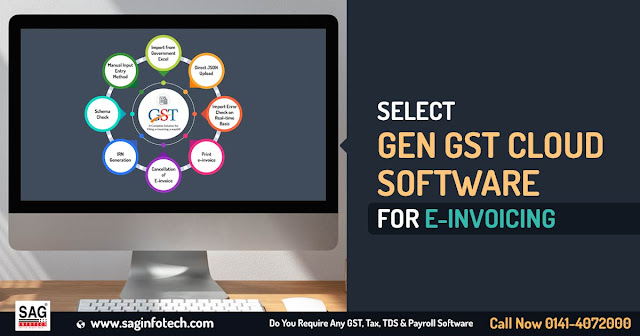Business accounting relies heavily on invoices since they have a variety of uses. This signifies that your clients or customers are responsible for paying you for goods and services they have received from you. In addition to this, an invoice can also be used as a form of payment agreement.
All Business-to-Business (B2B) transactions made by your company must be accompanied by an e-invoice if you are GST-registered. This article may be of interest to you if you are wondering whether an e-invoice in GST is needed.
Our guide to e-invoicing in GST explains what it means when it is applicable, and how it can be generated. The first step is to get started.
What Does E-Invoicing Mean in GST?
All B2B invoices are uploaded and authenticated by the GST portal in order to become known as an e-Invoice, also called electronic invoicing. Invoices are automatically assigned a unique IRN once the IRP has authenticated them. In addition to the digital signature and QR code, each invoice under GST is digitized and is known as an e-invoice.
GST E-Invoicing Applicability According to the Taxpayers’ Turnover
To help you easily understand the GST e-Invoicing via Gen GST cloud software, we have researched and then prepared this easy table based on the overall turnover of taxpayers.
| Aggregate Turnover | Applicable Month |
|---|---|
| INR 500 crore | Oct 2020 |
| INR 100 crore | Jan 2021 |
| INR 50 crore | Apr 2021 |
| INR 20 crore | Apr 2022 |
| INR 10 crore | Oct 2022 |
| INR 5 crore | Aug 2023 |
Here are a few other points you should keep in mind:
- If the taxpayer's total turnover exceeds the stated limit in any FY commencing from 2017-18 to 2021-22, he must use the e-invoicing system under GST.
- An aggregate turnover is the total revenue acquired by all GSTINs under one PAN.
- The e-invoicing system will take effect from the next fiscal year if the turnover of your organization did not exceed the threshold limit in the previous fiscal year, but has increased to reach the threshold limit in the current fiscal year.
- There are a number of classes of registered individuals who are excluded from e-invoicing under GST, as outlined in CBIC Notification 13/2020, including
- Goods transport company or agency
- NBFC, banking company, or an insurer
- An unit of Special Economic Zone (SEZ)
- A registered individual is providing transportation services for passengers.
- An Government department and a local authority
Simple process for Generating GST E-invoice
- The first step would be to create a JSON file for the e-invoice using advanced Gen GST e-Invoicing software or government sources.
- Once you generate e-invoices for all your B2B invoices, you need to upload them to IRP. In case your software integrates seamlessly with IRP through GSP, the JSON file will be uploaded automatically. As a result, the requisite details will be transferred directly to the IRP portal by your software.
- With this new step, the IRP system will evaluate, verify, and validate your e-invoice JSON file. To ensure that there are no duplicate GST registrations, they will check the central registration.
- The IRP system will begin generating the IRN once the e-invoice JSON validation has been completed successfully. Using the IRN generated, everyone's invoices for that period of time will be assigned a unique number. Additionally, the IRP method will correct the e-invoice JSON along with a QR code and a digital signature.
- A QR code will be attached to the JSON file of the e-invoice that is sent to the supplier. An invoice is printed by the supplier after the QR code has been added. Using connected software, the invoice details are automatically sent to an authentication server for verification and a QR code is generated instantly for e-invoices.


Comments
Post a Comment